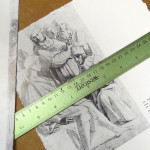I started this blog in its current form back in 2010 and it has become my invaluable journal of where the creative path has taken me. Recently, however, my SHARDS blog site completely crashed and I thought 15 years of entries and over 1000 posts were lost forever. Thanks to George Howard, a smart techie and highly-recommended good guy, we are patched up and running again. Sending you a shout-out, George!
I’m back just in time to share something lovely that Jude Hill wrote this morning –
“So what if I concentrate on story building with loose patches for a while? Language Patches is what I have come to call them. They are simple and small and maybe you can play along?”
This is so much like what I’m doing with my new workshop, Scrolls and Surface, that I wanted to expand on the idea. The scrolls that I’m assembling as prototypes for the class are nothing more than a collection small “patches” of narrative. They go together in various ways, much like chapters in a book, and because they are small, they can be rearranged.
Here are a few examples – some of these are image transfers on fabric, some are what I call “fusion patches,” and some are handmade or found objects.

The images that I choose incorporate on these “patches” reflect my personal themes: neo-santos, shards, paradoxical connections, lost children, myth and mystery. Your images will be different just as your story is different.
Once you start working this way, creating small components that will ultimately go together as a larger picture, you’ll discover all kids of possibilities and combinations. It’s great composition practice, but more than that, it’s a lesson in how one element affects another.
Assorted combinations of fusion patches and transfers to fabric – are there stories here? Can they be rearranged to tell a different narrative?



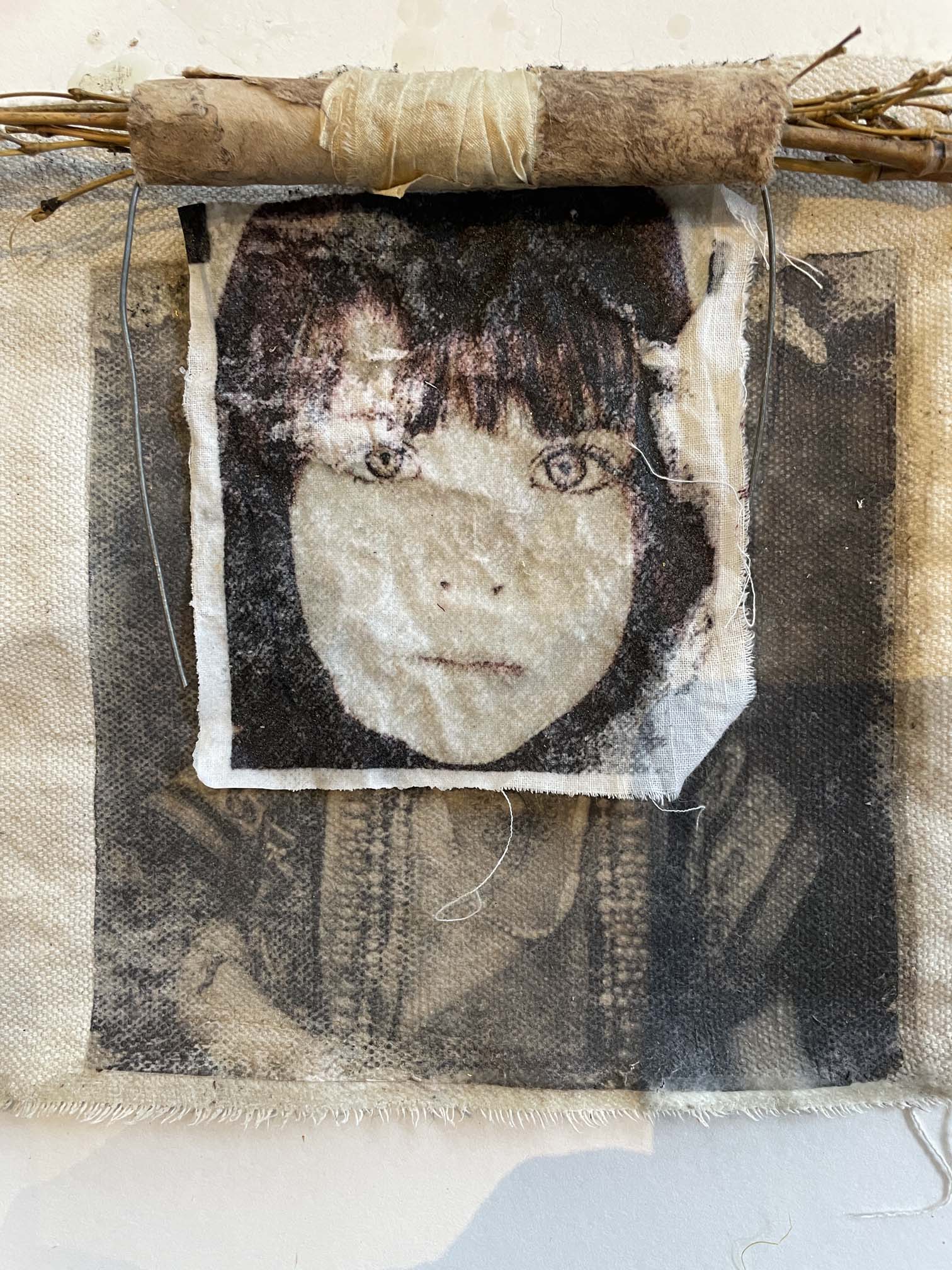


It really is so much fun to lose yourself in this task. And it’s equally as much fun to actually create the patches using all kinds of experimental methods. Even when something doesn’t work, it’s a good lesson. Jane Dunnewold makes Citrasolv transfer look so easy – when I first tried it, I got blobs. But at least they were mysterious blobs.

A Mysterious Blob
I’m filming a lot of these experiences for a new online workshop called The Pilgrim’s Scroll: Stories in Paper and Cloth which should be ready in a couple of weeks. In the meantime, it sure is great to have my blob – er, I mean, BLOG, back!
Thanks, Jude and George and all the people that help us stay connected and inspired!

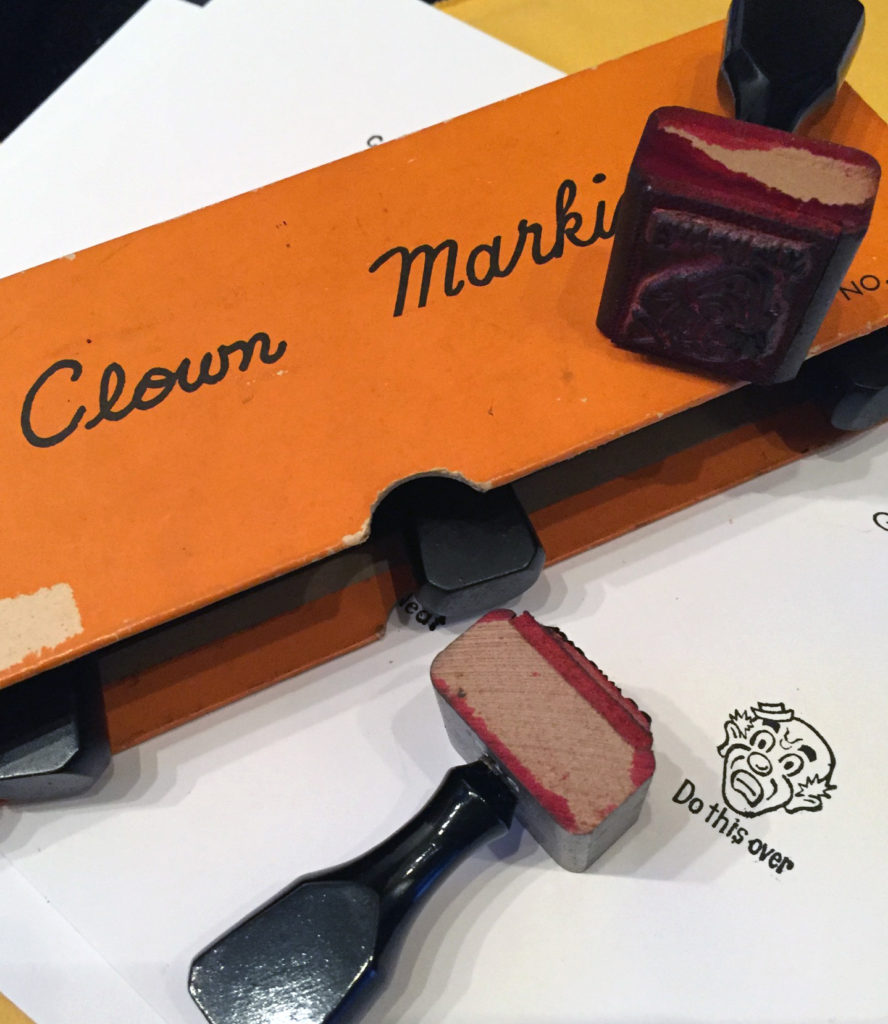




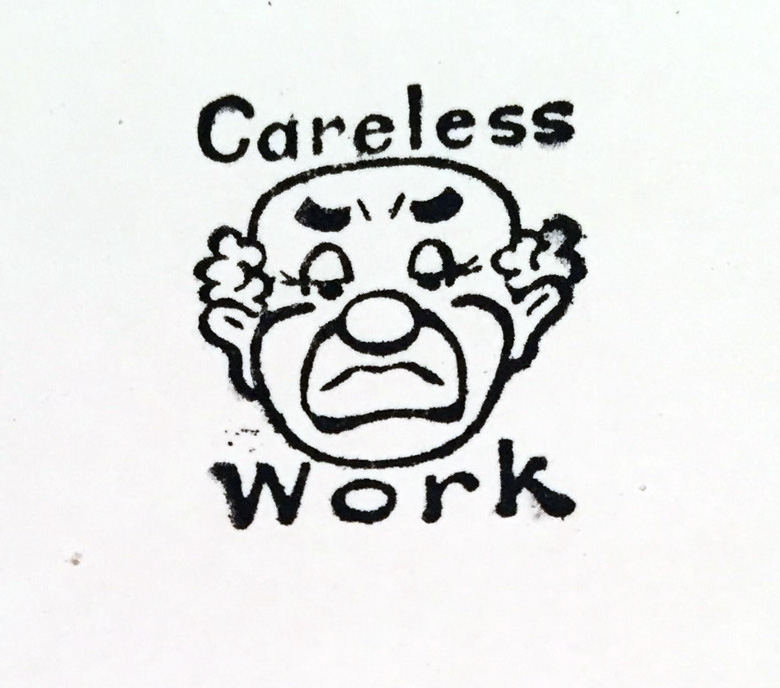




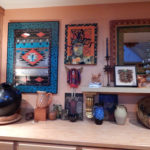






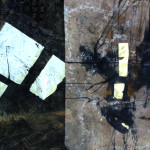



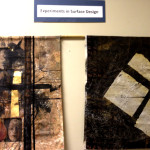


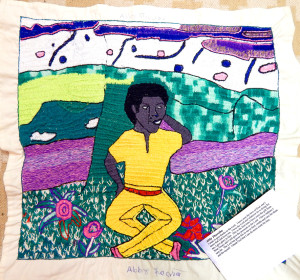

 Hooray! There were many more Ups that Downs yesterday. The only little downs were the really strong winds that spontaneously rearranged the artwork every fifteen minutes, and the high temperatures. But hundreds of people turned out for the eighty or ninety artists who showed on the
Hooray! There were many more Ups that Downs yesterday. The only little downs were the really strong winds that spontaneously rearranged the artwork every fifteen minutes, and the high temperatures. But hundreds of people turned out for the eighty or ninety artists who showed on the 





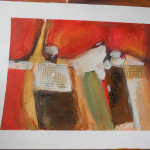

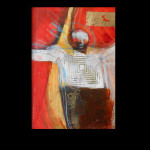
 Here’s the next one – it might not be finished, but it isn’t overworked. I simplified the composition and the palette, and then stopped. Sometimes less is more. (Except maybe for gold leaf, walnut ink, chocolate sorbet and Diet Dr. Pepper. :))
Here’s the next one – it might not be finished, but it isn’t overworked. I simplified the composition and the palette, and then stopped. Sometimes less is more. (Except maybe for gold leaf, walnut ink, chocolate sorbet and Diet Dr. Pepper. :))

